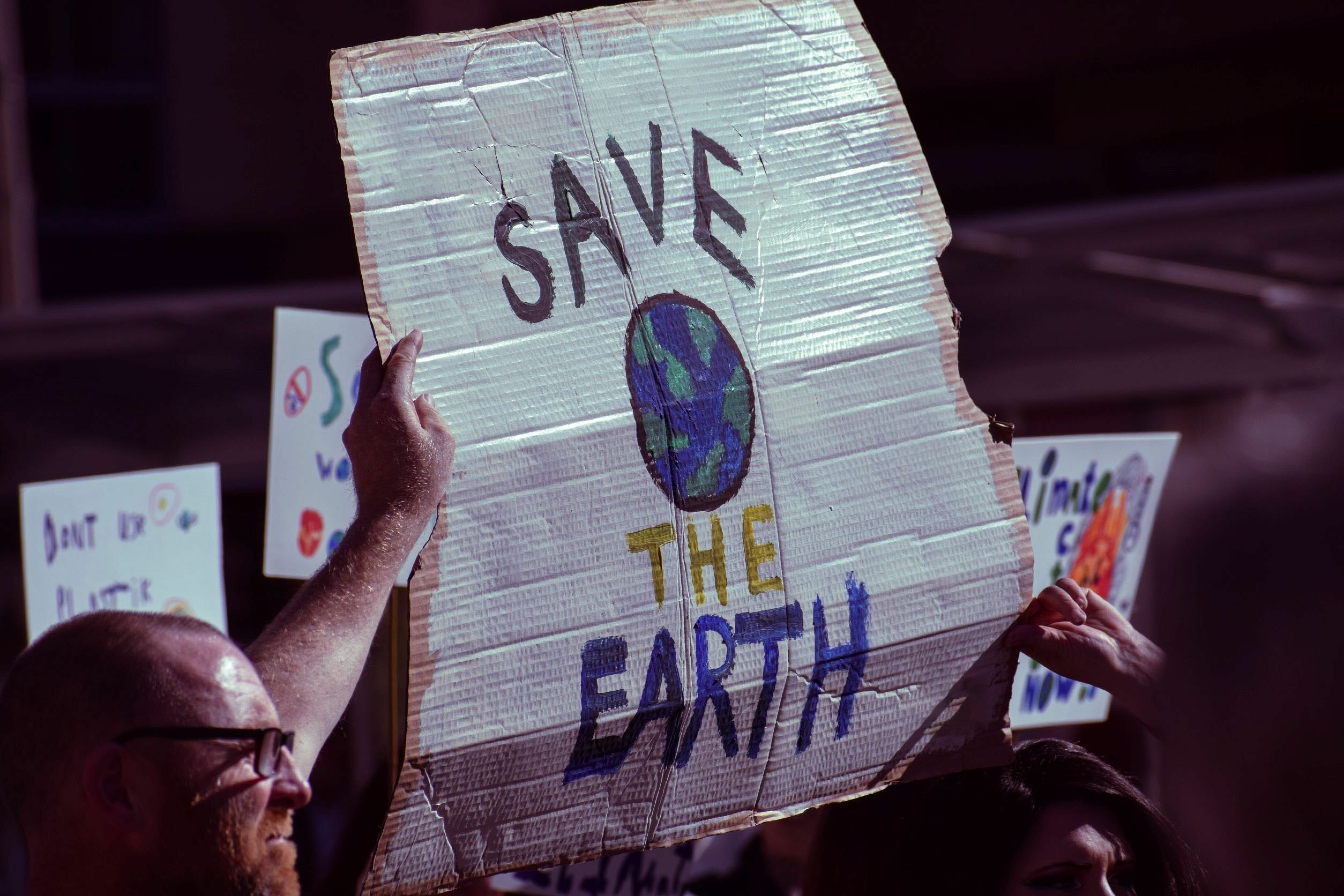12 Dec 2022 | News
Scientists "code red" warning in the shadows of COP27 and The FIFA World Cup

While the Qatar World cup and COP27 Loss and Damage Fund make headlines, scientists warn that climate change has pushed the earth's vital signs to record extremes.
In the recent report, "World Scientists' Warning of a Climate Emergency 2022," authors note that 16 of 35 vital planetary signs used to track climate change are now at record extremes. The report describes the increasing frequency of extreme heat events and heat-related deaths, rising global tree loss from fires, and a greater prevalence of insects and diseases thriving in the warming climate. Furthermore, the report highlights that food insecurity and malnutrition, caused by droughts and other climate-related extreme events in developing countries, continue to increase the number of climate refugees.
"The spectre of climate change is at the door and pounding hard."
-William Ripple, Professor of OSU College.
Signed by more than 1700 scientists back in 1992, this year marks the 30th anniversary since the publishing of the original "World Scientists' Warning to Humanity." Since the initial warning, there has been an approximately 40% increase in global greenhouse gas (GHG) emissions.
Meanwhile, the claims made during Qatar's successful bid to host the world cup have taken greenwashing to new levels. Frivolous promises alluding to a carbon-neutral event have turned into a World Cup that will emit more CO2 than any recent sporting event.
In June 2021, Fifa predicted that this year's Qatar World Cup would produce 3.6m tonnes of carbon dioxide, more than what some countries produce in a year. In reality, emissions are highly likely to be more extensive than outlined due to miss calculations regarding travel and the construction of six new stadiums.
The World Cup emission estimations, concerning air travel, compile data based on fans flying in and out of Qatar from their home country- not that they make repeated short-haul flights in and out of the region. But, due to an accommodation shortage in Doha, many fans are staying in neighbouring countries, only to be shuttled into Qatar via match-day flights, producing a multitude of carbon expenditures.
Additionally, rather than attributing construction emissions to the tournament itself, organisers have spread figures across the predicted lifetime of each venue, which is 60 years. Although FIFA's legacy plans claim the stadiums will be used well into the future, it's difficult to comprehend how six stadiums so close to one another will be used effectively in a small geographical area with less than 3 million inhabitants.

Despite unique architectural and air-conditioning feats, Qatar must purchase at least 3.6 million carbon credits to offset the original sum. Yet, instead of purchasing credits from a verified neutral standard, the organisers have set up the Global Carbon Council, raising climate association's concerns surrounding transparency and legitimacy.
While the earth enters "code red", the annual climate conference, COP, seems to have dived, with many attendees describing this year's conference as "the worst" COP yet. Although the Egyptian president had promised an "implementation COP" that would see past pledges give way to balanced action on tackling climate change, in truth, the results were mixed, accomplishing more on the impacts of climate change than on its causes.
Besides a short interlude during the height of the pandemic, since Cop1 in Berlin to Egypt this year, emissions have continued to project upwards. And yet again, COP27 failed to meet a formal agreement to reduce global fossil fuel use and did little to advance what had been agreed at COP26 in Glasgow regarding motions to remain below 1.5C.
The decision to set up a new fund for "loss and damage" resulting from climate change marked the climax of a decades-long effort by small island states and other vulnerable nations. Over the coming months, greater recognition from major developing countries about the true amount needed to rehabilitate and rebuild these bereaved countries will be critical to the fund's success. Although this eventual fruition of the specific fund and its associate committees is a step in the right direction, more must be done to support the countries that continue to suffer.
It is important to note that many of these countries, including the entire African continent, contribute the least to climate change and yet are the most exposed to its impacts. Another example is Pakistan, which has faced catastrophic flooding in recent years but emits less than 1 per cent of global emissions. The fund is significant as it demands recognition and aid from developed countries, many of whom are responsible for the larger proportions of emissions, to help vulnerable nations rebuild. And whilst the main headlines celebrate the gains made to the loss and damage caused, the real fight lies ahead in translating initial steps into strong outcomes.
Talks ran into overtime and persisted past the deadline on the conference's final day. But, unlike the World Cup football matches and COP27 discussions, climate change cannot run into extra time.
Global attention must instead be given to the staggering findings provided by an international team of researchers led by Oregon State University, whose comments remark that "humanity is unequivocally facing a climate emergency."
"As Earth's temperatures are creeping up, the frequency or magnitude of some types of climate disasters may actually be leaping up."
- The University of Sydney's Thomas Newsome, a co-author of the report.
With buildings contributing 40 per cent to carbon emissions, decarbonising the sector is critical to maintaining global warming below 1.5°c. Reducing carbon requires drastic and immediate action to stimulate behaviour and technology shifts.
"To avoid more untold human suffering, we need to protect nature, eliminate most fossil fuel emissions and support socially just climate adaptations."
Co-author Saleemul Huq of Independent University Bangladesh.
Globally, operational emissions account for almost a third of all energy-related carbon emissions. With global building stock expected to double in size in the coming years, carbon emissions released during building usage threaten to consume a large part of our remaining carbon budget.
The environment agency has long criticised businesses for leaving their lights blazing long into the night. Far from a recent discovery, wasted energy across the built environment is all too common, heightened further by the introduction of hybrid working. Dedicated to changing this narrative, Twinview provides building owners and operational teams with practical insight into a building's performance, identifying key opportunities to reduce a building's energy consumption.
Committed to aiding businesses in moving closer to Net-Zero, with integrated IoT sensors and artificial intelligence, the Twinview platform records energy use and positions these results alongside space utilisation data. As a result of optimising their operations and processes. , building owners reduce their energy consumption and overall carbon footprint.
Take a stance against climate change. Strengthen and measure your sustainable initiatives with Twinview. Book a demo and discover how you can better manage energy consumption, reduce carbon emissions and move closer to net zero.

Industry Insights
The Future of Sustainability in Real Estate - Part 2
Part 2 of our Future of Sustainability guide explores how to drive lasting change can only be driven through weaving ESG responsibilities into the fabric of an organisation.
Read more

Industry Insights
The Future of Sustainability in Real Estate - Part 1
In a rapidly urbanising world, the real estate industry is predicted to experience exceptional growth and activity in the coming years. Yet, rising inflation rates and economic factors have begun to change this outlook, find out what the future holds in Part 1 of our Future of Sustainability guide.
Read more
Book your one-on-one appointment with one of our specialists.
info@twinview.com
+44 (0)844 800 6660
London
24 Greville Street
Farringdon
London
EC1n 8SS
Newcastle
Spaceworks
Benton Park Road
Newcastle upon Tyne
NE7 7LX

